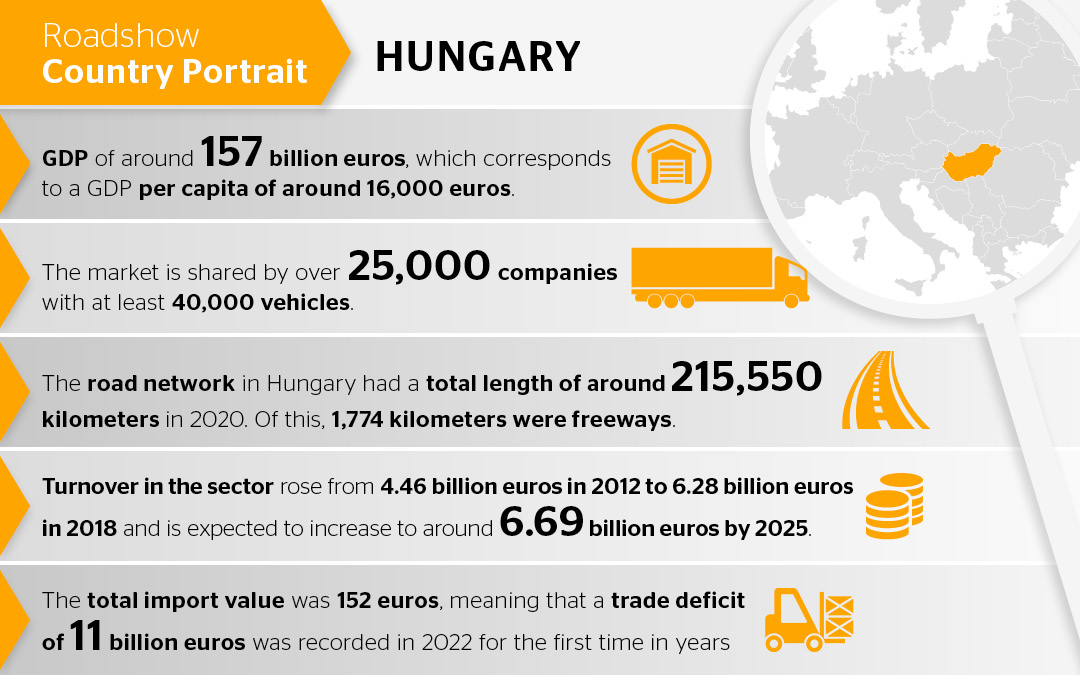Mixed is the best way to characterize Hungary’s economy. While growth was still at around 4.9 % in 2022, it fell to 0.55 % in 2023. The unemployment rate was around 3.6 % in 2022 and rose to around 4.08 % in 2023. And with an inflation rate of around 14.53 %, Hungary reached one of the highest rates in Europe in 2022. Find out what else awaits you in the country here.
With its 9.97 million inhabitants, Hungary achieved a gross domestic product of around 157 billion euros in 2022, which corresponds to a GDP per capita of around 16,000 euros. This puts Hungary in one of the bottom places in the EU between Greece and Slovakia.
Rapidly growing road network
Road freight transport has seen continuous growth in recent years. Industry turnover rose from 4.46 billion euros in 2012 to 6.28 billion euros in 2018 and is expected to increase to around 6.69 billion euros by 2025. The volume of goods transported by road is expected to reach 34.67 billion tonne-kilometres by 2024. With at least 40,000 vehicles transporting goods across Europe, the market is shared by more than 25,000 companies.
While road freight transport is booming, rail freight transport is stagnating with an expected turnover of around 600 million euros in 2025. This is why road construction also accounts for the lion’s share of the planned 3.09 billion euros in infrastructure investment for 2025.
 With around 1.75 million inhabitants, Budapest is the largest city in Hungary. Photo: iStock
With around 1.75 million inhabitants, Budapest is the largest city in Hungary. Photo: iStock
Hungary’s road network in 2020 had a total length of 215,550 km. Of this, 1,774 kilometers were freeways, 30,621 kilometers were main and regional roads and 183,155 kilometers were other roads. The length of the Hungarian freeway network has grown continuously in recent years and already amounted to 1,859.5 kilometers in 2021. In comparison, the rail network is significantly shorter at around 7,200 kilometers in 2015.
Lively trade
Hungary is a strongly export-oriented country. Electrical machinery, apparatus and equipment with a share of 15.5 % and road vehicles with 14.6 % were the most important export goods in 2023. The total value of exports amounted to around 150 billion euros. Germany was the top exporting country, accounting for 25.2 %, followed by Italy and Romania.
In terms of imports, Germany also led with 21.2 %, ahead of Austria and China. The total import value was 152 euros, meaning that a trade deficit of 11 billion euros was recorded in 2022 for the first time in years. Germany is both the most important export and import country for Hungary.
The main export goods in 2022 were machinery and apparatus (15.5 %) and road vehicles (14.6 %), while the main import goods were electrical machinery and apparatus (13.5 %) and road vehicles (7.8 %).
Have you ever bought a product from Hungary? We look forward to your comment!


0 Comments